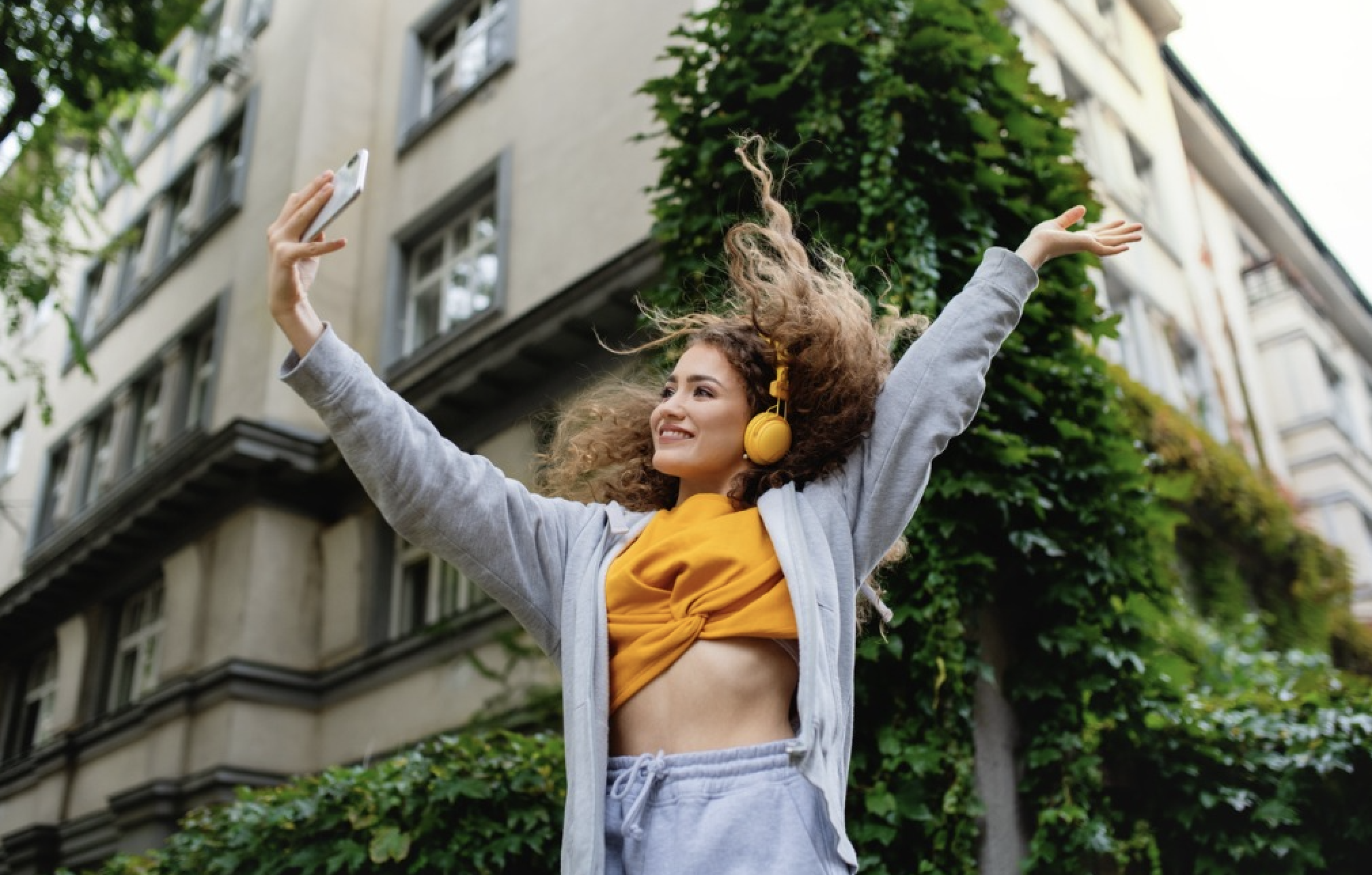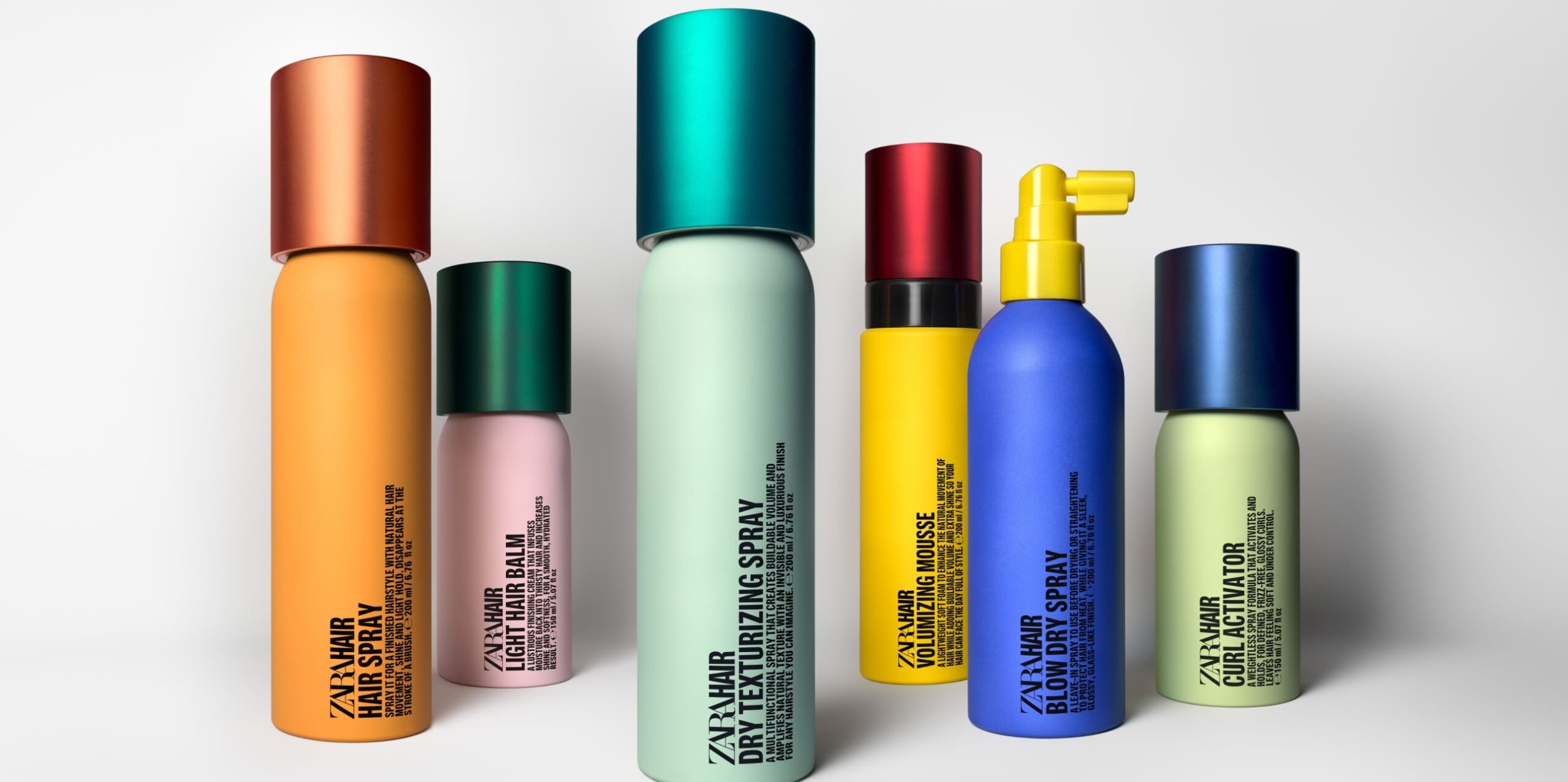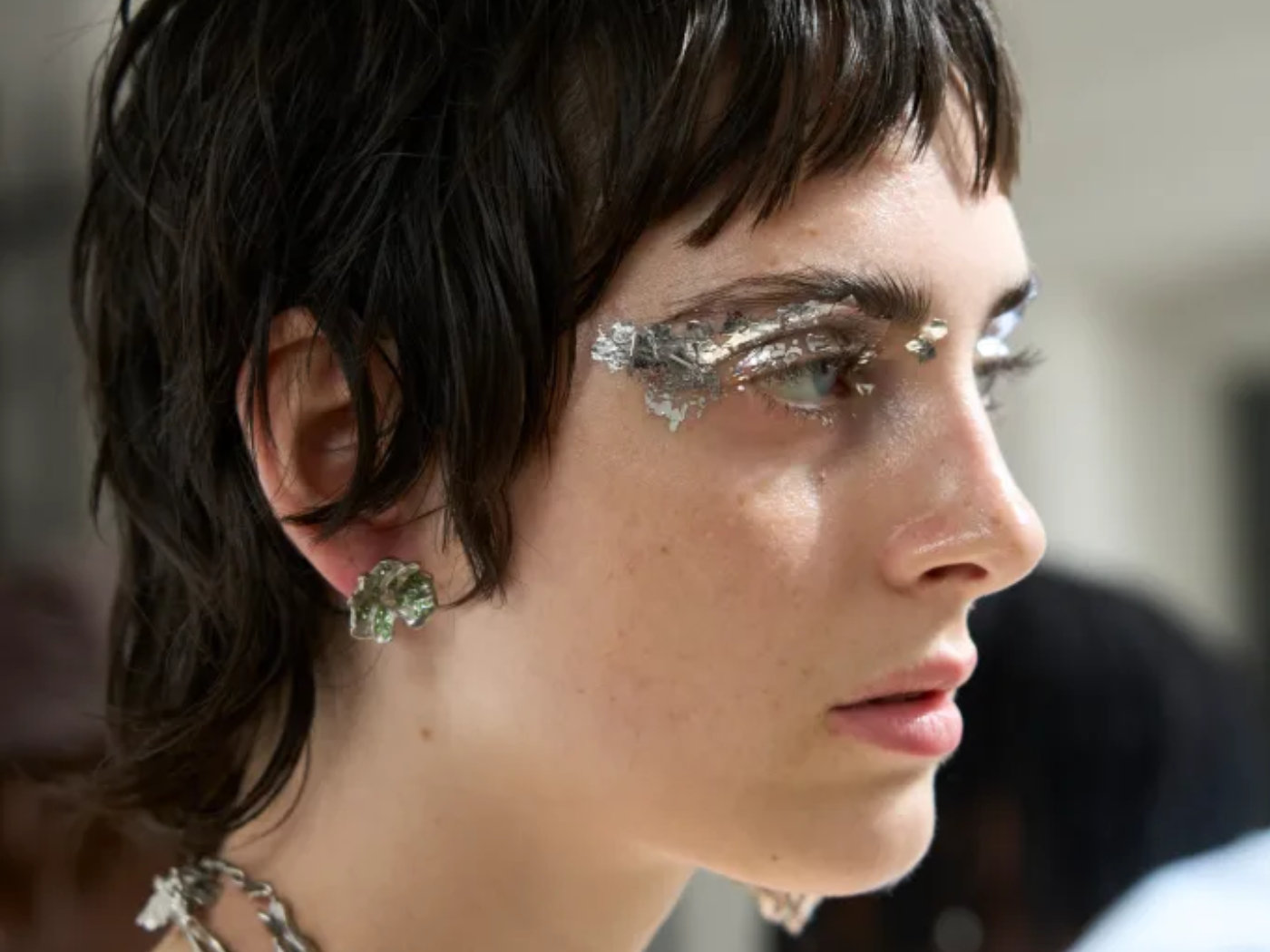There are, to use a scientific term, gazillions of #TikTokMadeMeBuyIt videos. But with the official US launch of TikTok Shop last week, that hashtag may need an update. TikTok no longer just makes you buy it—they introduce you to it, push you to a retailer, add in your credit card, complete the transaction, and send it to you…without ever leaving the app.
As an OG beauty editor, I’ve purchased just two things from the TikTok Shop so far—neither of them beauty: a neck fan (weird, but TikTok did make me buy it) and a lavender terry-cloth headband with matching wristbands. Because one needs to be cute and avoid water-runs-to-the-elbows discomfort when washing one’s face.
As for adding an actual cleanser to cart? Up until recently, I’d been skeptical of buying beauty in the Shop. Too many brands I’d never heard of, retailers I wasn’t sure were authorized, and goops whipped up in people’s bathrooms (bathrooms!). The type of products about which Dieux Skin co-founder Charlotte Palermino exclaimed to me: “That is so unsanitary. No merci, madame!”
But that’s all changing, as more and more legit beauty brands are lining TikTok’s digital shelves—and more and more consumers are purchasing in ways that could directly impact a company’s bottom line.
Take Benefit Cosmetics, an early adopter that joined the Shop in March, when it was still in alpha mode. “TikTok Shop is doing incredibly well compared to other social media retail we’ve tested in the past,” said Rena Gillen, Senior Director of US Marketing Communications for the brand. “We launched our new Fan Fest Mascara exclusively on TikTok Shop at the end of July—and, comparatively speaking, our TikTok Shop sales are up 1,418 percent compared to our last mascara launch on a different social media platform.”
Indeed, if you follow the money, you’ll see it’s ramping up fast on TikTok. Daily TikTok spend among US consumers, per eMarketer, went from $500,000 to $1 million in June and from $3 million to $4 million in August.
This may be why social commerce experts are so stoked for the Shop’s functionality. “TikTok has built their own Like to Know It on steroids and integrated it into their platform completely frictionless and free,” said Leslie Ann Hall, CEO of Iced Media, an agency that scales and builds beauty, health, and wellness brands and drives shoppable content through paid social. “That is mind-blowing to a marketer like me.”
With just over 102 million social buyers in the US, that’s a lot of people for brands to reach. And a lot of that lot buys on the ‘Tok. According to a 2023 GWI report, while 41 percent of Gen Z and millennials make an “impulse purchase” online every two to three weeks, 48 percent of TikTok users do so daily. And when you look at Gen Z alone, Insider Intelligence shows that adult Gen Zers are already as likely to make a purchase on TikTok as they are from YouTube.
Function Junction
As with any ecomm retailer, the goal for TikTok Shop—and the brands who sell there—is to get the transaction done with as few clicks as possible. By integrating with a brand’s own ecommerce platform, discovery, add to cart, and purchase all happen via one tab.
Though Shopify is a popular commerce platform, one perk of TikTok Shop versus other social media is that TikTok works with multiple commerce platforms, including Magento, Woocommerce, and Salesforce Commerce Cloud. Through its “Fulfilled by TikTok” functionality, TikTok also syncs up with numerous customer service and shipping operators so that it can “store, pick, pack, and then ship sellers’ products to customers,” according to a press release.
On the ‘Tok, consumers have multiple places to discover a new product, from in-feed videos and Live Shopping (the brand itself and affiliate creators can tag products); through curated collections in a brand’s “Product Showcase”; and by searching directly in the “Shop” tab.
“We see sales come from three different areas of the TikTok ecosystem,” said Benefit’s Gillen. “The first is in our short videos, we show product in fun and entertaining ways and then tag the SKU being featured. The second is through Live selling, where we host weekly shows, demo various products, and educate viewers on the simplicity of buying within TikTok Shop without leaving the show. Lastly, we have select products available on TikTok Affiliate Center, where creators can apply to tag our products in their content in return for a commission, should a viewer make a purchase.”
Until the Shop’s launch, it was difficult for ecommerce brands to see how the platform was driving direct sales, said Hall. But now, “brands will be able to leverage TikTok Shop’s robust Data Insights tool to finally show and prove TikTok is a viable platform that can deliver on real business growth with the data-driven metrics to back it up.” She explained the four ways TikTok provides analytics to sellers:
- Performance of products and content
- Affiliate analytics platform to see how creators are performing (there are three tiers of affiliate partnerships, Hall said)
- Live stream analytics platform
- Ad products platform
The Sell Curve
We know that “sex sells,” but you know what brings in bucks when beauty products are involved? Transformation.
For Laura Mercier, “consumers can see an immediate transformation” with its Caviar Sticks scribbled on eyes and High-Vibe Lipsticks on mouths, said Diane Kim, Global Brand President of Laura Mercier.
Laura Mercier joined the Shop in mid-April as part of a larger strategic positioning for the brand. “We are a makeup brand, but whether it’s a setting powder or primer, Laura’s been known for complexion products—the look of the iconic flawless face, that’s the core of our business,” Kim said. “We’re modernizing Laura Mercier and pivoting to a focus on more color. There’s more in the innovation pipeline in terms of color products than ever.”
Kim views the Shop as a new acquisition channel. “TikTok in the past may not have been a platform that Laura Mercier would be on, but now it makes perfect sense,” she noted.
A product’s universality seems to be another selling—and we do mean selling—point. Kim points to Laura Mercier’s classic Translucent Setting Powder, another hit on TikTok. “It works for all skin tones,” Kim explained. “It removes any purchase hesitation that a consumer might have with a shaded product, [like a foundation].”
Ditto for Benefit’s cult favorite Benetint, the single-shade liquid blush. “It went viral last summer because of its quick and easy payoff,” Gillen said.
Quick and easy may be why brands such as ImPress press-on nails have been so successful for Kiss, which has also seen wins with ImPress Falsies, lashes you apply without a separate glue step. When Rosio Soria of @rosia.roses (1.8 million followers) bought the falsies, “she was trying to debunk them,” explained Assunta Catalano Anif, Kiss’s Senior Marketing Manager of Social Media. “The product itself is so innovative, but I think [the video’s success was] the reaction of how it worked so easily. It was like a ‘Get Ready With Me,’ this is a BS product—then it really works.”
Beyond that organic surprise value, Anif believes Soria’s authenticity also played an important part. “She used to work at Ulta. Her audience trusts her,” Anif said.
Content (Creators) are Queen
TikTok built itself on an anti-polished, anti-Instagram aesthetic. Which is why, when selling products, a creator’s own unique appeal is still half the appeal.
All of the brands contacted for this article agreed that creator videos are driving more revenue than brand videos. “Our owned channel is still making revenue, however the scale in which qualified TikTok creators make their own recommendation to their loyal viewers is where we see the sales potential long-term,” said Gillen.
To wit, per a Bazaarvoice report, 40 percent of online shoppers say they are more likely to press the “buy” button when a product ad features some type of UGC content, be it customer reviews, photos, or social posts. The report also found that 53 percent of online shoppers say that social posts featuring UGC images are “more convincing” than professional product photos.
Also interesting: “That things have gone viral from influencers to those without a following,” Anif said. After an ImPress Falsies post from a content creator with just a few thousand followers went viral, “we couldn’t keep up with our own ecomm sales,” she added.
Kiss isn’t the only brand for which creator-following size doesn’t seem to matter. Hall cited a recent Meta study, which showed that beauty shoppers were equally likely to be influenced by a nano influencer as a mega one. “That TikTok-ification of content—whether that ad is running on TikTok or a TikTok-style ad is running on Reels or on YouTube Shorts— that is what’s driving purchase today two to one over brand-created content in an ad,” Hall explained.
Shop Talk
Dieux Skin—which works with Iced Media on paid social strategy—has entered the Shop. But first, to gather insights, Palermino tested the functionality herself by ordering a Beauty of Joseon sunscreen (a Korean brand that doesn’t sell in the US) from the Shop. Her video, “how to not buy FAKE sunscreen on TikTok,” assessed whether it was the real deal.
“With TikTok Shop, I was able to verify [that the retailer] was selling the actual product and show people that the process did work,” Palermino said. As of press time, the video has reached 70,000 views—and sold 2,000 bottles.
“Our bet was that the TikTok algorithm would prioritize shoppable content in feed to help first-mover brands on TikTok Shop gain more organic visibility in feed,” Hall said. She was right.
But virality today isn’t enough for the long run. “As with everything at the beginning, I think we’ll see astronomical growth and these big things that pop,” predicted Palermino. “But what’s your ongoing strategy?”
If “location, location, location” is what makes a sale in real estate, “strategy, strategy, strategy” is the key to social commerce. Particularly if, as Palermino and Anif each individually suggested, TikTok goes the route of full-on ecommerce marketplace, the likes of Amazon and Walmart.
“The number-one surprising thing to me is all of the unsolicited calls I’ve been getting from some of the most established, social-first, on-trend indie brands that have already been onboarded to TikTok Shop and aren’t seeing traction—and it’s because they don’t have a plan,” Hall said. “You would never launch on Amazon and not have a plan. You would never go into 500 Sephora stores and not have a plan. If you don’t have a 360 marketing and merchandising plan for TikTok Shop, then you’re not going to have success.”
So far, Kim has been pleased with Laura Mercier’s results with the Shop. “Because it’s early stages, for us it made sense to view it as a consumer reach channel, to broaden our base and deepen organic relationships that are already there through influencer communities. “Going forward, as we become more sophisticated in this space, we will have to evolve our expectations and what our ROIs will be.”
Admittedly, as the Shop’s still so new, there aren’t yet fully baked best practices and benchmarks. Hall’s first strategy tip for brands who want to get in on the game? Create a roadmap for shoppable-first content as part of the production process.
Which includes understanding this: In the TikTok world of social commerce, the message, content, and narrative of a product often matters more than that of the brand. “Watching the full user journey from discovery to purchase to repeat purchase, especially in beauty, it’s understanding that you can’t be so prescriptive in terms of brand style guide when briefing creators,” Hall explained.
“The person watching needs to be able to identify the call to action so that it drives an immediate purchase,” she continued. “A creator driving that story about a product benefit is driving a purchase. Because of that trend, plus the idea that you can transact natively—with fewer clicks and not leave the platform—should drive more purchases.”




